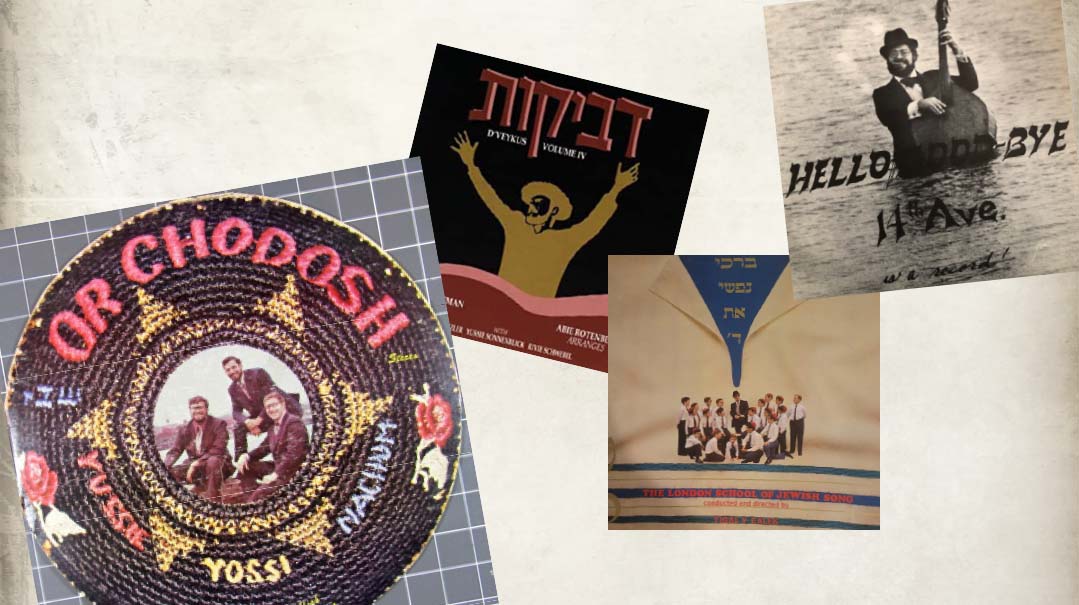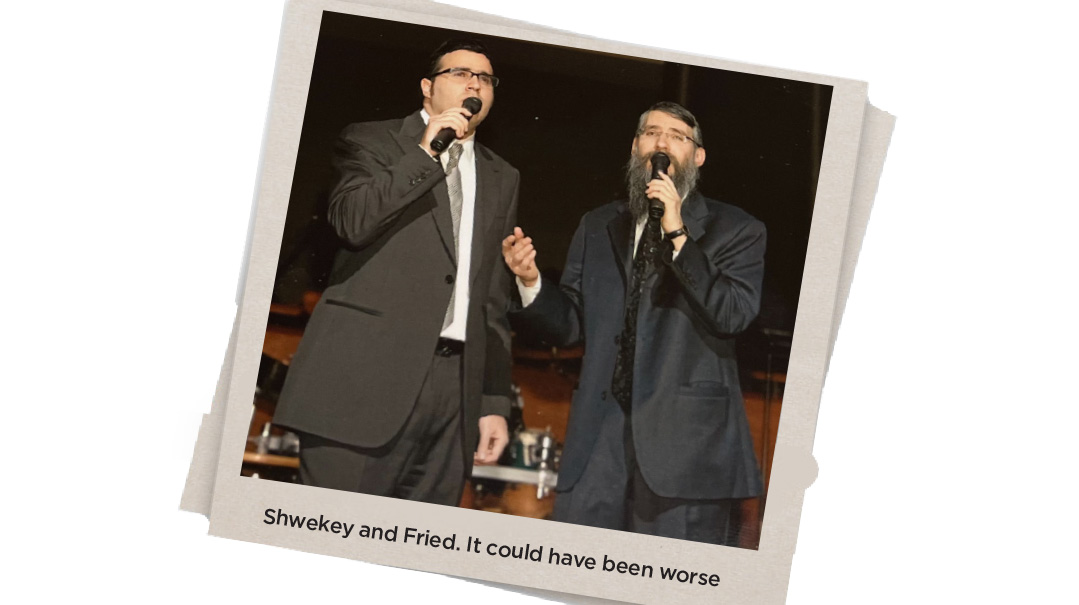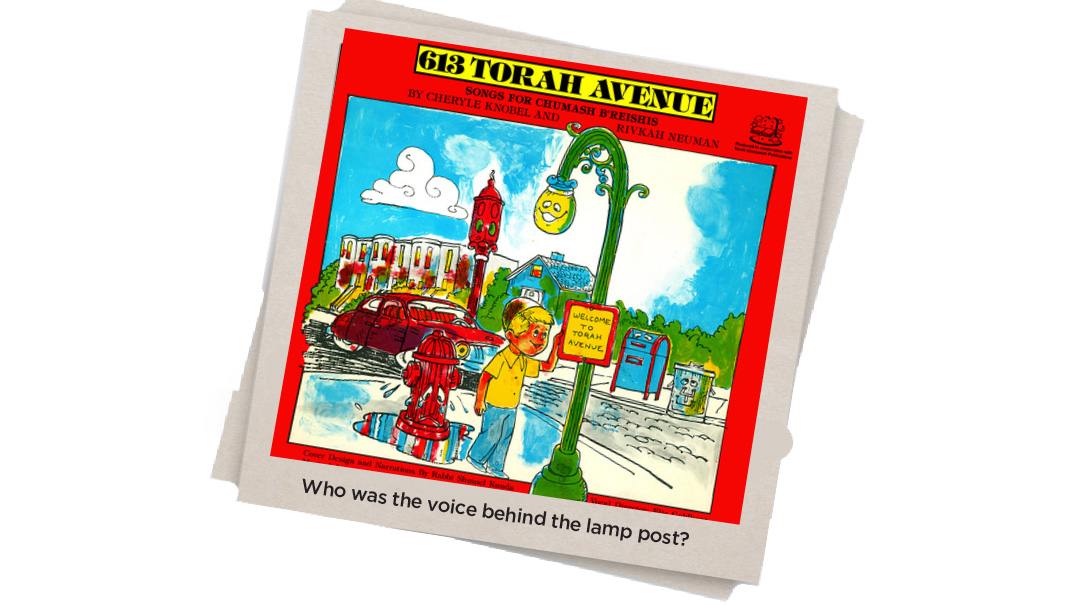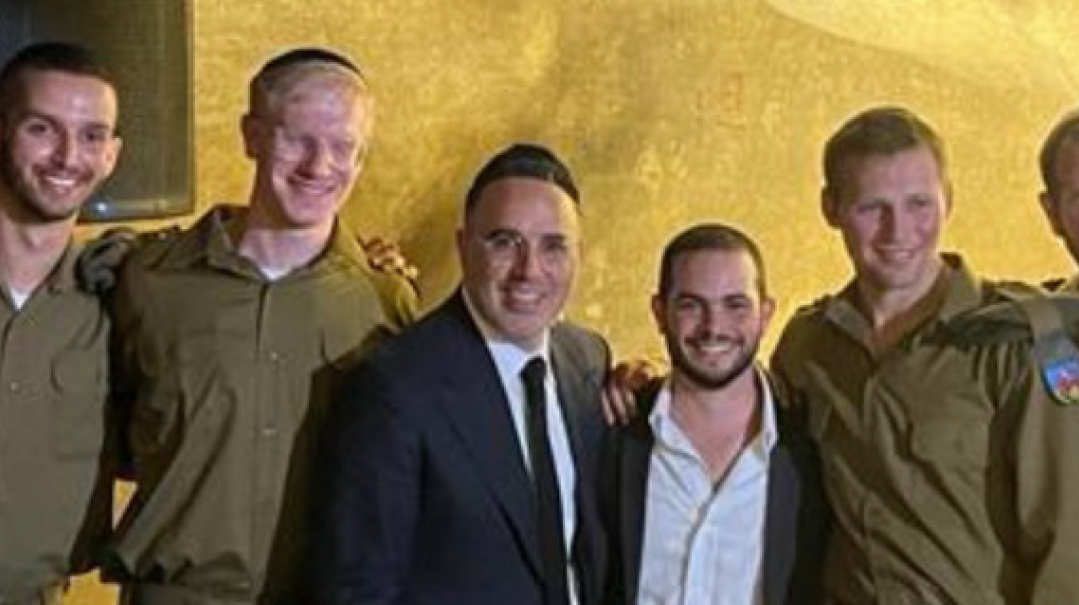Got You Covered

There have been some iconic covers associated with the ever-growing Jewish music industry

When music producers create an album, they often weigh the question: Does a good album cover enhance the sales? I’m not sure if a person shopping for an album really cares what the jacket looks like — I’m more inclined to believe the purchase is about the content, not the cover.
Still, over the decades, there have been some iconic covers associated with the ever-growing Jewish music industry. And some of those vinyl record jackets are collector’s items today. Who remembers Yigal Calek’s Borchi Nafshi London Pirchei album with the tallis katan and real string “tzitzis” attached to the lower corners? Or the record jacket of Or Chodosh Volume II from 1972, circular in shape and designed to look like a yarmulke?
Actually, says Yossi Toiv, one of the Or Chodosh originals, the round record jacket made sense. “I was thinking of ideas for our second album, and while we were in the studio, we ordered pizza,” Yossi told me. “When the pizza came it suddenly struck me: Why should a round pizza pie come in a square box? You buy a shtreimel and they give you a round box, same with a sheitel. So why does an LP record come in a square box? So I decided to make a round cover, but what should be the theme? I wanted it to be something to do with Yiddishkeit. I figured I could either do shemurah matzah, a shtreimel, or a yarmulke. I opted for the last one, and had somebody knit a giant yarmulke that became the cover of the album. I never dreamed it would become a classic.”
One of the people responsible for making some memorable album covers was Shmuel Kunda a”h. He created dozens of children’s albums (Boruch Learns His Brachos, Boruch Learns about Shabbos) and did the artwork in addition. He also did the artwork for the 613 Torah Avenue albums, creating a niche specialty in making inanimate objects come alive — a crying fire hydrant, and laughing lamp post, a curious mailbox.
One early famous cover was Ani Maamin, the third Pirchei album (1968) — a picture of the Kosel HaMaaravi, drawn by Yisroel Lamm as a Camp Munk banner, way before he was professionally involved in music. Pirchei album innovator Rabbi Eli Teitelbaum a”h loved it and made it a record cover. The original banner is still hanging in the Camp Munk lobby.
One of the most talked about record covers at the time was Shlomo Carlebach’s Yisrael Betach B’Hashem, a live album from a concert in Brooklyn College right after the Yom Kippur War, featuring the now-famous picture of a soldier standing atop a tank in the desert, draped in a tallis, and clutching a lulav and esrog. That cover went viral before viral made it into the dictionary.
One person responsible for many Jewish record covers was Tovia Ganz, who designed over 200 albums — from early MBD and Fried to Uncle Moishy. His happy, colorful cover for our Suki and Ding’s Torah Island, on which he made the characters truly come alive, is one of my favorites.
Some producers decided to keep all their album covers in one motif, in order to maintain the flavor of the series (until they all began to resemble each other and that wasn’t the best for business). One example that comes to mind is Baruch Chait’s Kol Salonika, for which every album cover had an image of two chassidim dancing — one dressed in Greek garb and one in a shtreimel. The repeat image didn’t seem to hurt D’veykus sales, though — as that shadow of a chassid with his hands up became a symbol for an entire generation.
Another memorable album, JEP 4 — Someday We Will All Be Together, featured a picture of a child superimposed onto the Kosel. Both pictures were taken by Rabbi Eli Teitelbaum, and long before Photoshop. And remember London School of Jewish Song with Neginah (“Ashirah,” “Ko Amar”)? If you held the cover in one position, you saw an image of the London skyline with the Big Ben clock, and if you turned it a bit, it turned into the New York skyline. Yigal was always a showman, even on the album covers.
How far will people go to get a laugh? Dovid Nulman can tell you. Back in 1973, he made a spoof album called Hello and Goodbye, 14th Avenue. Dovid dressed up in a tuxedo, took his upright bass, and drove to Brighton Beach. When he reached the frigid shore, even though it was wintertime, he walked right into the water with his tuxedo and his instrument and had the photographer shoot away. The picture was on the back cover of the album, and on the promotional ad. It really made a splash.
(Originally featured in Mishpacha, Issue 897)
Oops! We could not locate your form.






